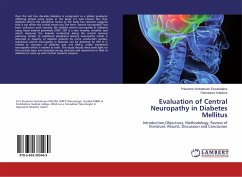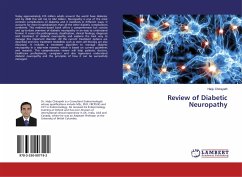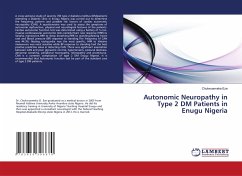Over the last few decades diabetes is recognized as a global pandemic affecting almost every organ in the body. It s well known fact that diabetes affects the peripheral nerves of the body but research suggests that it can affect the cranial nerves too.The term central neuropathy has been unknown until recently. We studied central neuropathy in diabetes using visual evoked potentials (VEP). VEP is a non invasive, sensitive tool which measures the impulse conducted along the central nervous pathway. Similar to subclinical peripheral sensory neuropathy which is detected in majority of diabetic patients by nerve conduction studies, subclinical central neuropathy in diabetes can be detected by VEP. It is related to duration of diabetes and not HbA1c unlike peripheral neuropathy which is related to both. This study should shed some light on this exciting topic and stimulate young clinicians and researchers in field of diabetes to come up with further research projects.
Bitte wählen Sie Ihr Anliegen aus.
Rechnungen
Retourenschein anfordern
Bestellstatus
Storno








